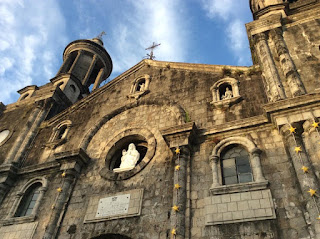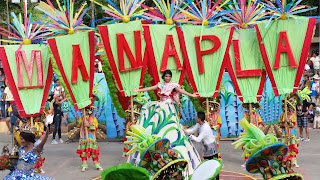Throwback...Stories of Negros Island
It was sometime on the second of January 1995, that i joined tourism service in my province---Negros Occidental. After 27 years, I chanced upon the Tourism Situationer of the Department of Tourism compiled and prepared by the late Mr. Edwin Gatia,
 |
| The April 27, 1876 San Sebatian Cathedral |
This is an expanded version of the Annual Tourism Situationer, which has changed through the years but facts on History, Arts and Culture remain the same.
Interesting as it is, let me share to you what i read on the book about the San Sebastian Cathedral
In 1575 , Bacolod became a town from a small village by the river of Magsungay, under the patronage of Saint Sebastian.
When Jesuits were expelled upon the order of the King of Spain in 1767, this was the time when the village was to be elevated as a parish. However, Fr. Leon Pedro was appointed in 1806 as 'Propitario' and Bacolod was able to meet the requirements to become a Parish. In September 1818 with Fr. Julian Gonzaga as the first Parish Priest.
He encouraged the people to live near the seashore, leaving the hills aka 'Buluboklods' which later on turned into a place of loneliness, locally known as 'Camingawan' .
The construction of San Sebastian began with coral stones from Guimaras, the roofing required 14,000 shingles, made of weaves of bamboo slats, with beams made of hardwood from Palawan. However, Fr. Gonzaga died in 1826, he was succeeded by Fr. Roman Manuel Locsin who continued the work and donated the large bell in 1853 dedicated to Saint Sebastian . Fr. Locsin also died in 1863, at a time when recollects started coming . He was replaced by a secular priest Fr. Mariano de Avila, who donated the second largest bell and a smaller one. A belfry was constructed wherein bells were mounted, on October 1867. After eight years of serving the parish, it was turned over to Fr. Mauricio Ferrero in 1871.
 |
| Fr. Mauricio Ferrero |
 |
| Fr. Fernando Cuenca |
Still, i would like to dedicate this to Mr. Edwin Gatia , Butch Gerasmo and Tina Lapres.
Here is a province I appreciate and consider my residence, and there is no better way to describe the Land of Sweet Surprises , rather by telling you bits and pieces of what I learned to love through the years.
The Division of Negros Island (excerpts for the Negros Tourism Situation Manual)
It was on July 1876 where thirteen priests from the oriental side of Negros submitted a petition to Governor -General in Manila, Valeriano Weyler, calling for the division of the island.
 On September 2,1877 , a report was furnished after an investigation had been conducted, recommending the separation of the oriental side of Negros Island.
On September 2,1877 , a report was furnished after an investigation had been conducted, recommending the separation of the oriental side of Negros Island.
The report recognized the arguments and justification of the 13 priests. They cited circumstances as distance and the long hours of travel between east and west coast, increase in population, hearing of prisoners in courts was too far and many more.
A Royal Decree was issued by the governor in Madrid dated October 25, 1889, Governor Weyler then established the Province of Negros Oriental as a separate political unit on January 1, 1890 ---some thirteen years after the petition was made.
Today, the island is composed of two provinces, Negros Occidental facing Western Visayas , and is part of Region 6 while Negros Oriental facing Central Visayas is part of Region 7.
(first of three parts)


.jpg)


Comments
Post a Comment